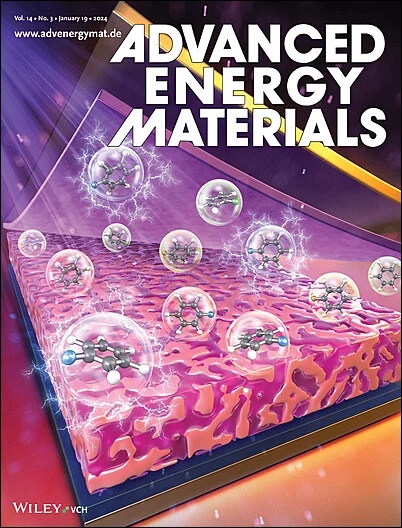Locating Non‐Radiative Recombination Losses and Understanding Their Impact on the Stability of Perovskite Solar Cells During Photo‐Thermal Accelerated Ageing
IF 26
1区 材料科学
Q1 CHEMISTRY, PHYSICAL
引用次数: 0
Abstract
Commercialization of perovskite solar cells (PSCs) requires further breakthroughs in stability, but the complex degradation mechanisms and the interplay of the underlying stress factors complicate insight‐driven improvement of long‐term stability. This study establishes a quantitative link between potential degradation—specifically open‐circuit voltage (定位非辐射复合损失并了解其对钙钛矿太阳能电池光热加速老化过程稳定性的影响
钙钛矿太阳能电池(PSCs)的商业化需要在稳定性方面取得进一步突破,但复杂的降解机制和潜在压力因素的相互作用使长期稳定性的改进变得复杂。本研究建立了电势降解(特别是开路电压(VOC)和准费米能级分裂(QFLS))与psc光热稳定性之间的定量联系。值得强调的是,非辐射复合损耗的增加会导致VOC和QFLS的看似可以忽略不计的下降,尽管它会导致填充因子(FF)和/或短路电流(JSC)的显著降低,从而导致整体性能下降。通过结合非破坏性光致发光成像和漂移扩散模拟,揭示了在光热老化过程中,不稳定的低维钝化在数十小时内失效,产生体缺陷,而不稳定的空穴-输运-层接触在数小时内诱导界面缺陷。在这些发现的基础上,采用了坚固的空穴-传输-层聚合物界面和增强的钙钛矿晶体质量来抑制老化过程中界面和体缺陷的产生,在加速老化条件下(85°C和两个太阳光照)实现了T80寿命超过1000小时。
本文章由计算机程序翻译,如有差异,请以英文原文为准。
求助全文
约1分钟内获得全文
求助全文
来源期刊

Advanced Energy Materials
CHEMISTRY, PHYSICAL-ENERGY & FUELS
CiteScore
41.90
自引率
4.00%
发文量
889
审稿时长
1.4 months
期刊介绍:
Established in 2011, Advanced Energy Materials is an international, interdisciplinary, English-language journal that focuses on materials used in energy harvesting, conversion, and storage. It is regarded as a top-quality journal alongside Advanced Materials, Advanced Functional Materials, and Small.
With a 2022 Impact Factor of 27.8, Advanced Energy Materials is considered a prime source for the best energy-related research. The journal covers a wide range of topics in energy-related research, including organic and inorganic photovoltaics, batteries and supercapacitors, fuel cells, hydrogen generation and storage, thermoelectrics, water splitting and photocatalysis, solar fuels and thermosolar power, magnetocalorics, and piezoelectronics.
The readership of Advanced Energy Materials includes materials scientists, chemists, physicists, and engineers in both academia and industry. The journal is indexed in various databases and collections, such as Advanced Technologies & Aerospace Database, FIZ Karlsruhe, INSPEC (IET), Science Citation Index Expanded, Technology Collection, and Web of Science, among others.
 求助内容:
求助内容: 应助结果提醒方式:
应助结果提醒方式:


